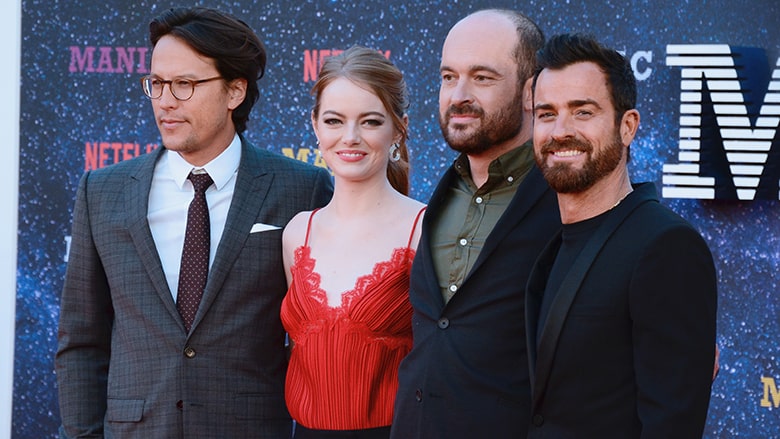‘Maniac’ Review
Contrary to what most people will tell you, TV is a wasteland of overly long, hyper-cynical, quasi-soap opera garbage. In this world, something like Maniac is a breath of fresh air. It’s wild, weird, inventive, and more than a little sweet.
Based on a Swedish miniseries and helmed by underappreciated wunderkind Cary Fukunaga, Maniac is quite unlike anything available to TV viewers these days. It’s an amalgam of all kinds of things, well done and put together in a deft balancing act. It’s set in a sort-of sci-fi world that’s not so much the future but a warped version of the present, complete with targeted, in-person advertising and clunky analog computers. This world is quickly left behind, however, for the world of the mind as the main story follows a series of characters as they journey into their own heads for the purposes of a cutting-edge drug trial.
The A story follows Owen Milgram (Jonah Hill) a schizophrenic heir who participates in the strange trial in order to make money, as well as Annie Landsberg (Emma Stone), a depressed woman who’s addicted to one of the drugs involved.
The B story follows the doctors and technicians who administer the trial, including the drug’s creator: James Mantleray (Justin Theroux), a paraphilic mess of a man with serious Oedipal issues. Joining him is the addict Dr. Muramoto (Rome Kanda), the no-nonsense Dr. Fujita (Sonoya Muzuno), and the histrionic computer G.R.T.A. (Sally Field).
The drugs being tested are designed to eliminate all emotional suffering by taking patients step by step through a process that will allow them to live through, confront, and ultimately deal with their deepest personal issues in the form of lucid dreams. The series alternates between the real world and these dreams, as each one slowly begins to affect the other as the trial progresses and devolves, with mishap after tragi-comic mishap. Things quickly grow more complicated and dangerous as it becomes clear that the drug-makers actually have no idea what they’re doing. The dreams provide a great sense of variety as they mimic and parody different genres of films, TV, and pop-culture all while metaphorically commenting on the characters’ psychology and their situation in the waking world and they’re a whole lot of fun.
The show is exceedingly clever as it constructs dream worlds that comment on the satirical waking world, juggling layers of meaning and complexity without ever becoming too obtuse, and always maintaining a strong emotional through-line that keeps the audience connected to the characters. Each of the main characters is pathetic and repulsive in their own way, each troubled by something, but each is also relatable and sympathetic. In spite of all their short comings, I wanted the best for each of them. I wanted them all to be happy, which is ultimately what the show is about.
The filmmaking on display from Fukunaga and crew is top notch. The camera work, editing, and art direction is all aesthetically pleasing and narratively effective without drawing too much attention to itself. It’s a show that feels more like a film and less like the standard, paint-by-numbers TV style.
Even with all of Maniac’s visual and narrative pyrotechnics, the heart of the show is quite mundane. It’s about a group of troubled people going through therapy in order to craft better versions of themselves and become happier. It’s that core that I think ultimately makes the show work so well. For all its complex artifice and surrealistic flourishes, Maniac is a show about every day folks trying to be happy. And that’s something we all can relate to.
Verdict: Shiny and Chrome
Maniac (10 episodes) is available on Netflix




